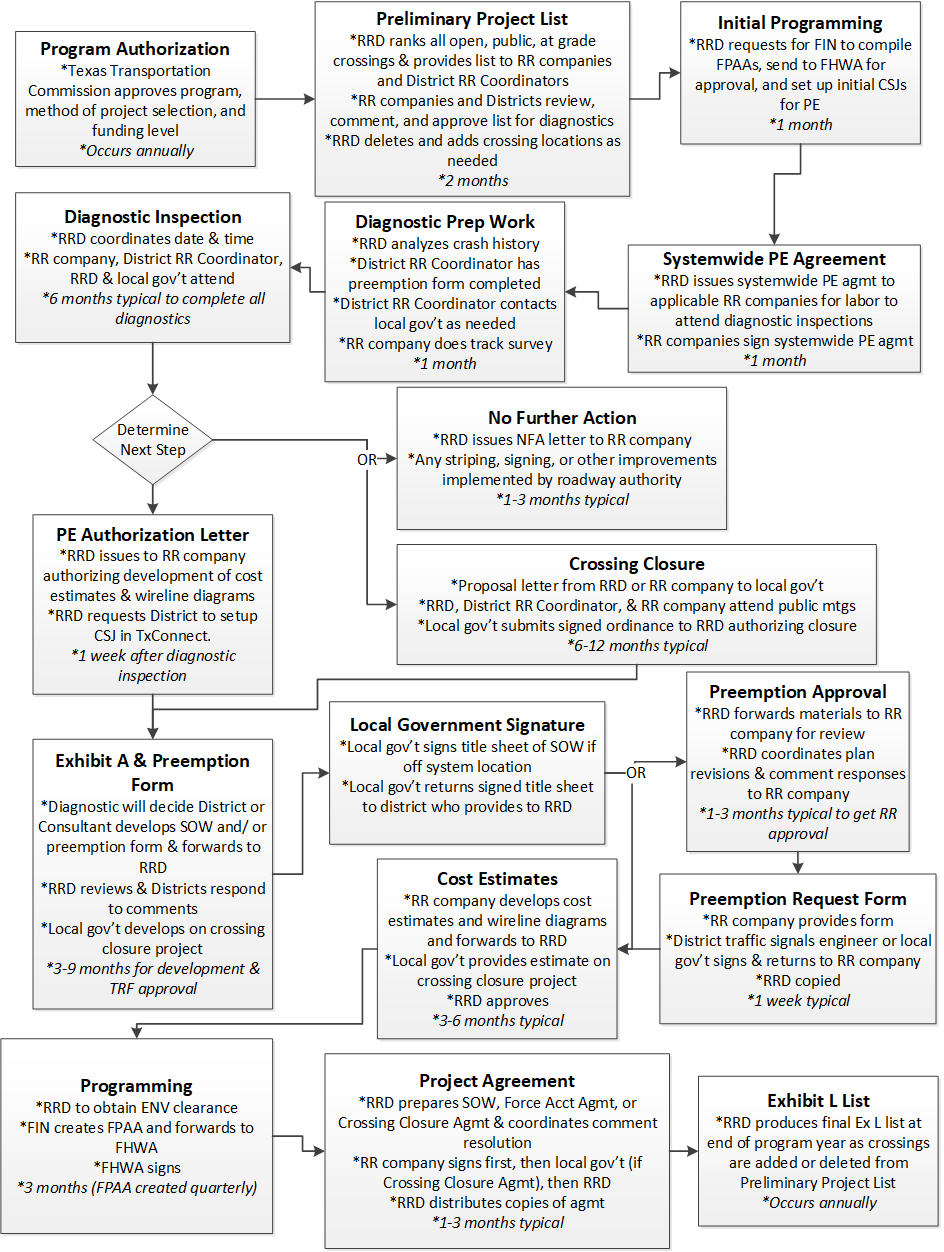Chapter 4: Safety Projects (Federal Railroad Signal Program)
Anchor: #i1001302Section 1: Overview
Anchor: #i1001308Federal Railroad Signal Program (Section 130)
The Section 130 Program (Section 130), formally the Federal Railroad Signal Program (FSP), is funded under the Surface Transportation Program (STP), Title 23, United States Code (USC) Section 130. This program is managed by the Rail Division’s Rail Grade Crossing Section under Category 8 (Safety) of the Unified Transportation Program (UTP) as a bank balance allocation program. Each year, the Texas Transportation Commission authorizes the total amount of funding and the method of project selection, providing flexibility within each program year to cancel and add projects to the program without commission action.
The Section 130 program was historically funded with 90% federal and 10% state funds, and under the 2021 Infrastructure Investment and Jobs Act, 100% of the funding can be federal. TxDOT funding for the program is typically around $20 million annually, with funds set aside from the Highway Safety Improvement Program (HSIP) out of Category 8, excluding any cost participation from local governments and railroad companies. The 10% state match, if applicable, applies to projects both on and off the TxDOT system.
All open public at-grade crossings are eligible for Section 130. Permitted crossings where the state permits the railroad to cross existing state right of way (as described in Chapter 6, Railroad Capital Improvement Projects) and safety projects as described in this section may be funded with Federal Section 130 funds. For work on permitted Class I crossings, a match shall be required from the affected railroad, while work on other rail lines may be fully funded at the discretion of the Rail Division.
For non-permitted crossings, where the road was licensed by the railroad, federal and state funds may pay 100% of the costs.
Typical safety projects include:
- Anchor: #OTGBCINV
- Installation/adjustment of railroad lights and gates. Anchor: #LICDEWYF
- Traffic signal installation and/or preemption. Anchor: #UDMBTCQW
- Crossing closures. Anchor: #KGGJETJG
- Crossing corridor improvements. Anchor: #VUPQKWKP
- Signing and striping improvements. Anchor: #CYFLNASC
- Roadway or crossing surface improvements. Anchor: #FMFHDAEO
- Sidewalks and medians. Anchor: #NPIKPYWH
- Blocked crossing mitigation.
Any crossing locations identified for safety upgrades via the Section 130 which may have an existing construction project should be funded and constructed under the construction project unless RRD management and the district agree otherwise.
Starting in 2019, RRD also started to increase partnering with other district, division, or local government projects to supplement existing non-railroad safety projects such as sidewalk, traffic signal installation or preemption, and humped or vertical crossing mitigation. These partnering projects are reviewed on a case-by-case basis by RRD, in addition to the annual array of projects.
Anchor: #i1001368Section 130 Project Agreement Flow Chart
Figure 4-1 presents a flow chart depicting the process for obtaining a project agreement for a typical Section 130 project.
NOTE: Not all steps are applicable to every Section 130 project. Project steps and time frames vary depending on the project scope.
Figure 4-1. Project Agreement Flow Chart
